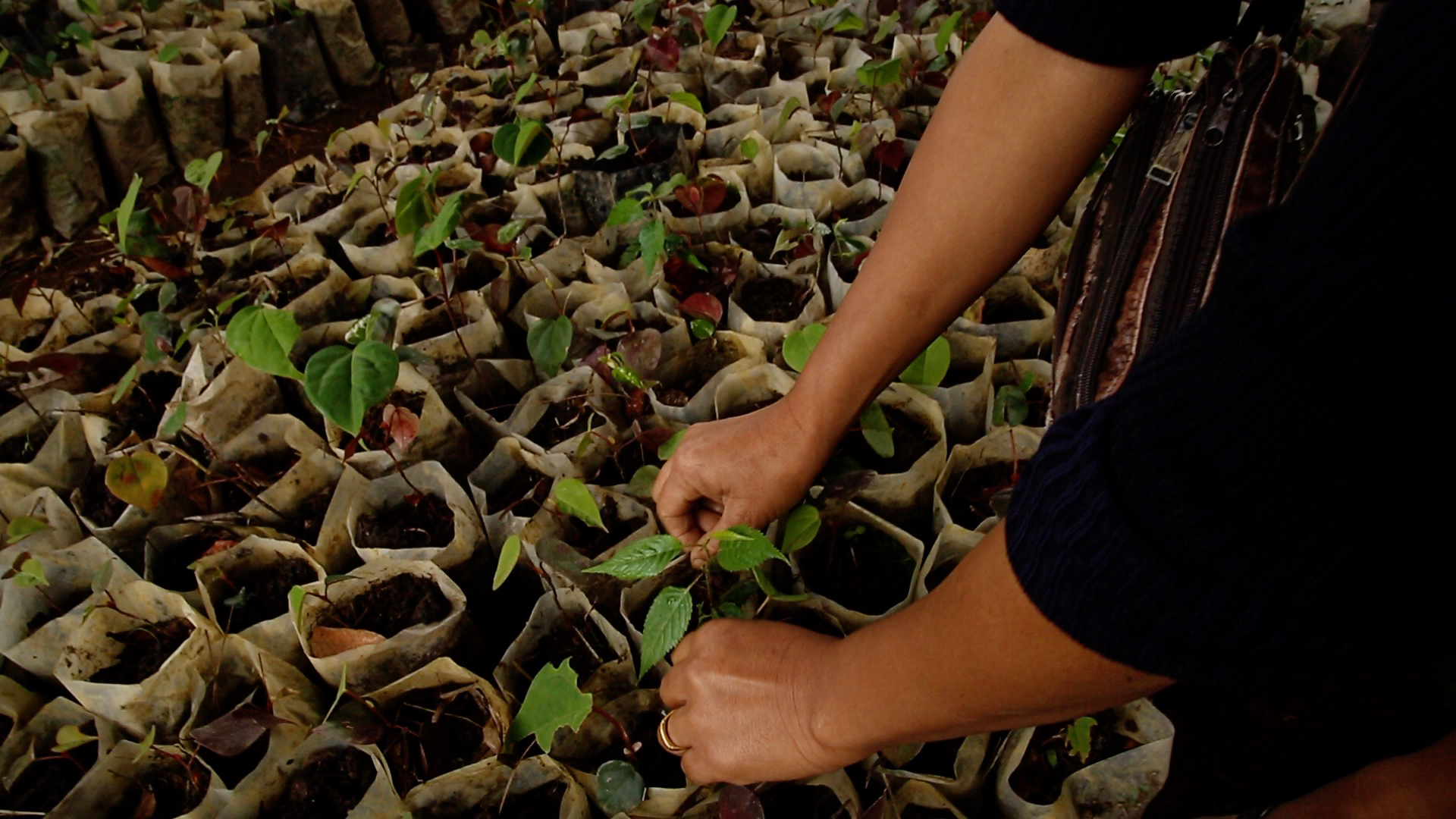How do we keep trees alive and sustained after they are planted?

To help us in our goal of planting 1 million trees, we’ve partnered with an amazing organization, WeForest, who’s spearheading tree planting efforts in key areas worldwide. So why plant in the Khasi Hills region? What happens to the trees after they’re planted? How are we measuring their impact on the environment? CEO of WeForest and RISE Board Member, Marie-Noelle Keijzer, breaks it down for us below.
What trees are planted and why these trees?
In the Khasi hills, the most suitable planting technique is Assisted Natural Regeneration (ANR) with Enrichment Planting as these degraded landscapes are today still covered with some trees (80-150 trees per acre). This is not enough to deliver the ecosystem services we can expect from a dense forest: like protecting soils, avoiding landslides, providing habitat for animals and valuable nutrients for people.
The species we add come from seeds gathered in the surrounding forests by local people and are therefore indigenous, which accelerates natural recovery of the degraded sites. 10 % of all trees planted annually are grown first in home-based nurseries or nurseries run by Self-Help Groups.
The main tree species you will find in the East Khasi Hills are Alnus nepalensis, Castanopsis indica, Exbucklandia populnea, Myrica esculenta, Pinus kesiya (Khasi pine), Prunus nepalensis, Schima khasiana.
Who’s caring for the trees and how do we make sure the trees are protected in the long term?
WeForest makes the Earth cooler by planting trees.
If we just did that, we would run the risk of having them sooner or later illegally cut and possibly transformed into charcoal.
So what do we do to ensure that local communities see more value in the standing trees than in the felled ones? This is probably the most interesting part of our activity.
We provide alternative livelihood for local communities: studying their needs and developing with them economic activities to reduce their dependency on forestry produces. Instead of selling charcoal and working in gravel pits, they can now get income from selling pigs and chicken, which we give them as in-kind support for rearing. We also provide shade nets, agricultural training, and fruit tree saplings that boost farming productivity and grow their income.
We reduce their need for wood: by subsidizing efficient woodstoves and LPG connections, we reduce their need for logging.
We train the trainers: the community facilitators train Self Help Groups (female and male), farmers’ clubs, youth volunteers from participating villages in forestry best practices and how to harvest some of the biomass from the trees without killing them.
This is for us the best guarantee that people -long after we have completed the project- will want to continue protecting the forests they now have restored with us and continue planting for future generations.
How do we measure our impact and track the health of the areas we restore?
WeForest is a science-based organization, we also partner with renown local and international universities who challenge our activities and help us develop best practices.
Before we start a project, a detailed management plan is designed to define for ecological restoration as well as socio-economic activities.
Clear objectives are set against them and measured by our team to evaluate the tree density, the growth, the resulting diversity and well as an increased livelihood for people.
- We audit our projects and report on the progress twice a year: this includes vegetation growth as well as socio-economic results.
- Every donation is assigned to a specific GPS polygon on a map: making every area exclusive to each donor or sponsor.
- The robustness of our processes and the integrity of our accounts are audited every year by Deloitte.


